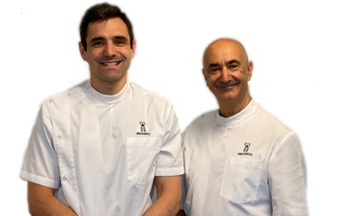Your dentist has advised you to have Root Canal Treatment.
But what exactly is Root Canal Treatment?
Relax…There is no need to lose your troubled tooth...
Root Canal Treatment can save it for you.
What is Root Canal Treatment?
Root canal treatment is also known as endodontics or “root canal therapy”. is a common dental procedure that removes damaged tissue from inside the root canals of a tooth, thereby significantly lengthening the life of the tooth. Endodontic treatment significantly restores once damaged teeth and is a recognised and superior alternative to tooth extraction as a means of treating damaged interior structures such as pulp.
- Access is gained into the tooth, removing decay and allowing for root canal treatment to be commenced.
- During root canal treatment the infected or damaged pulp is removed from the inside (i.e. the root canal) of the tooth via the small access hole.
- The root canals are then cleaned, disinfected and shaped to a form that can be completely sealed.
- The next stage is to seal (fill) the root canals with a filling material to prevent re-infection.




This treatment can take several appointments, depending on how complex your tooth is. Teeth may vary in shape depending on the number, length and curvature of the root canals. Sedative dressings and temporary fillings may be placed inside your tooth between each visit to help settle the surrounding tissues and destroy remaining bacteria. In between visits you can use your tooth for chewing, but some care should be exercised. During the root canal treatment your tooth will be isolated and protected with a sheet of rubber (“rubber dam”). The rubber dam isolates the tooth, so only the tooth can be seen during the root canal treatment. This prevents debris from within the tooth entering the mouth, or saliva and bacteria from the mouth entering the tooth during the root canal treatment process. A metal band may also be placed around your tooth, to protect the tooth and help retain the temporary filling. This band remains in place until the crown of the tooth is restored at the final appointment along with the root canal filling.
Why are X-Rays taken during root canal treatment?
It is necessary to take a number of radiographs (commonly called x-rays) during the root canal treatment - these are required to check various treatment stages. Since the roots are under the gum and in bone, the root canals cannot be seen with the naked eye and can only be visualised using the assistance of radiographs.
Will there be any Pain?
Root canal treatment is a comfortable procedure and it involves no pain as the tooth will be anaesthetised with local anaesthetic during treatment. However, sometimes you may have discomfort after an appointment due to inflammation in the surrounding tissues - this is usually relieved by the dressing that your dentist puts in your tooth. Sometimes a mild analgesic may be required. If you experience severe pain, or if your discomfort lasts for more than several days, then you should call your dentist or endodontist for advice.
Success of Treatment
Your tooth will only be treated if there is a good chance it will last a long time.
However, no guarantee can be given - because people have varied healing responses and some infections may respond differently. Studies have shown the majority of endodontic treatments are successful and uneventful. If your case is considered less favourable, then you will be informed. Healing of the jaw bone around the tooth can be slow and it is important to have your tooth reviewed regularly to assess healing. You will be recalled for these checks. Rarely, additional treatment in the form of an endodontic surgical procedure may be required to aid the healing of the tissues around the tooth. Your dentist or endodontist will discuss this procedure with you if it becomes necessary.
After root canal Treatment
When root canal treatment has been completed, a filling or crown (cap) may be necessary. This will restore your tooth to its original shape and function. The tooth should be restored properly as soon as possible as there is a risk of damage to the tooth from biting forces. Following root canal treatment you must look after your tooth, as you do your other teeth, as root canal treated teeth may still get decay or gum disease.
Is there an alternative to Root canal treatment?
Root canal treatment is a safe procedure. There is no real substitute for your own tooth. It is far more efficient in chewing and biting than an artificial tooth. Root canal treatment is undertaken to save your tooth. The only alternative method of removing the infection is to extract your tooth. If you do not have the tooth replaced with an artificial one, the adjoining teeth may shift, interfering with biting and chewing. Loss of a tooth may also lead to other complex problems including gum disease, decay of other teeth, jaw joint and jaw muscle problems. Replacing your tooth with an artificial tooth often involves more involves more complex treatment such as bridgework or implants.
An example of a tooth before and after root canal treatment with healing of the tissues around the tooth.

Infected root canal before root canal treatment

Healing after root canal treatment





